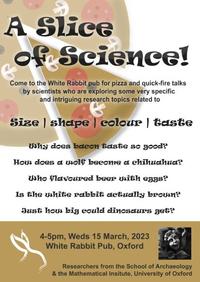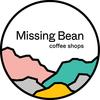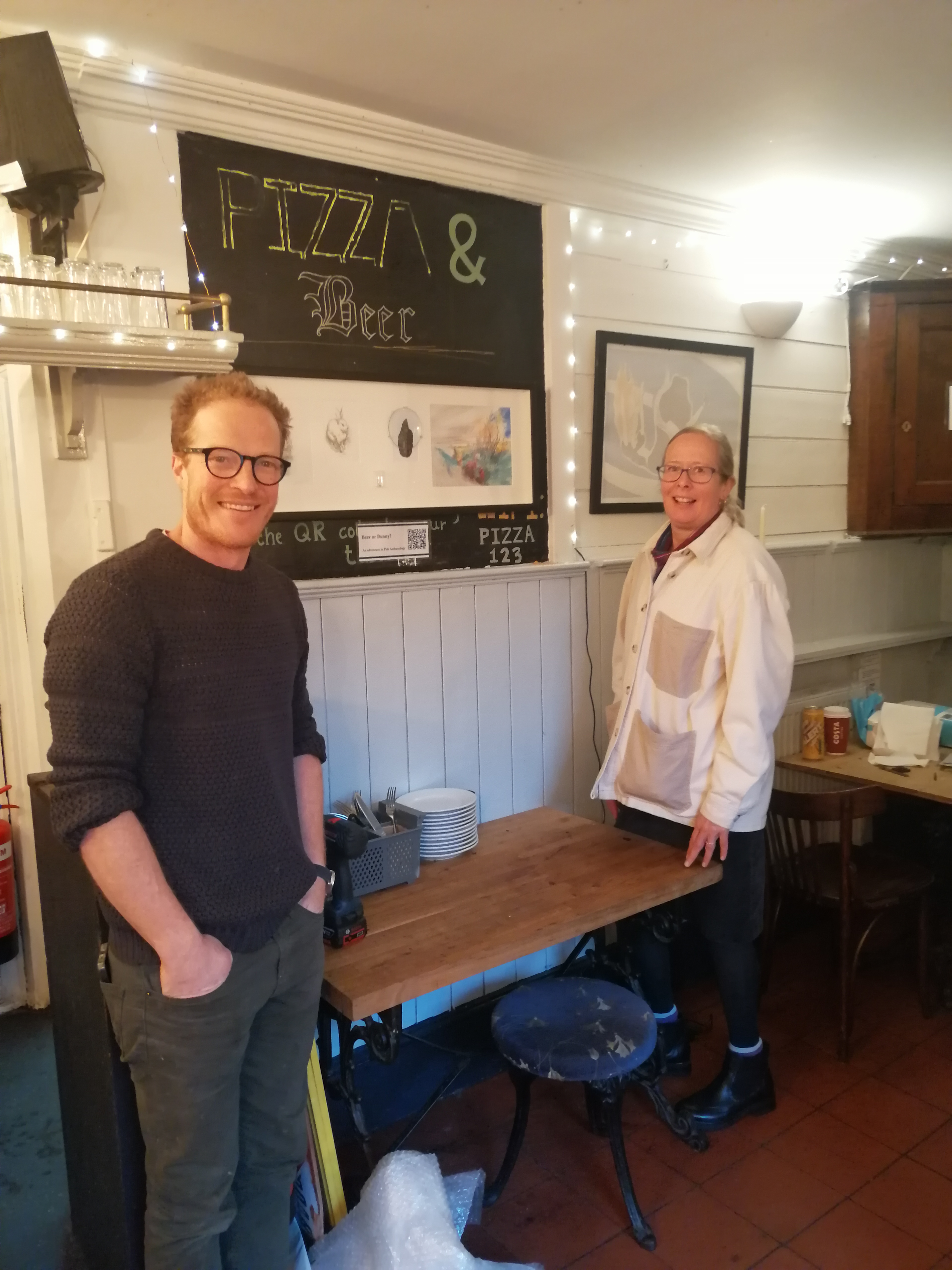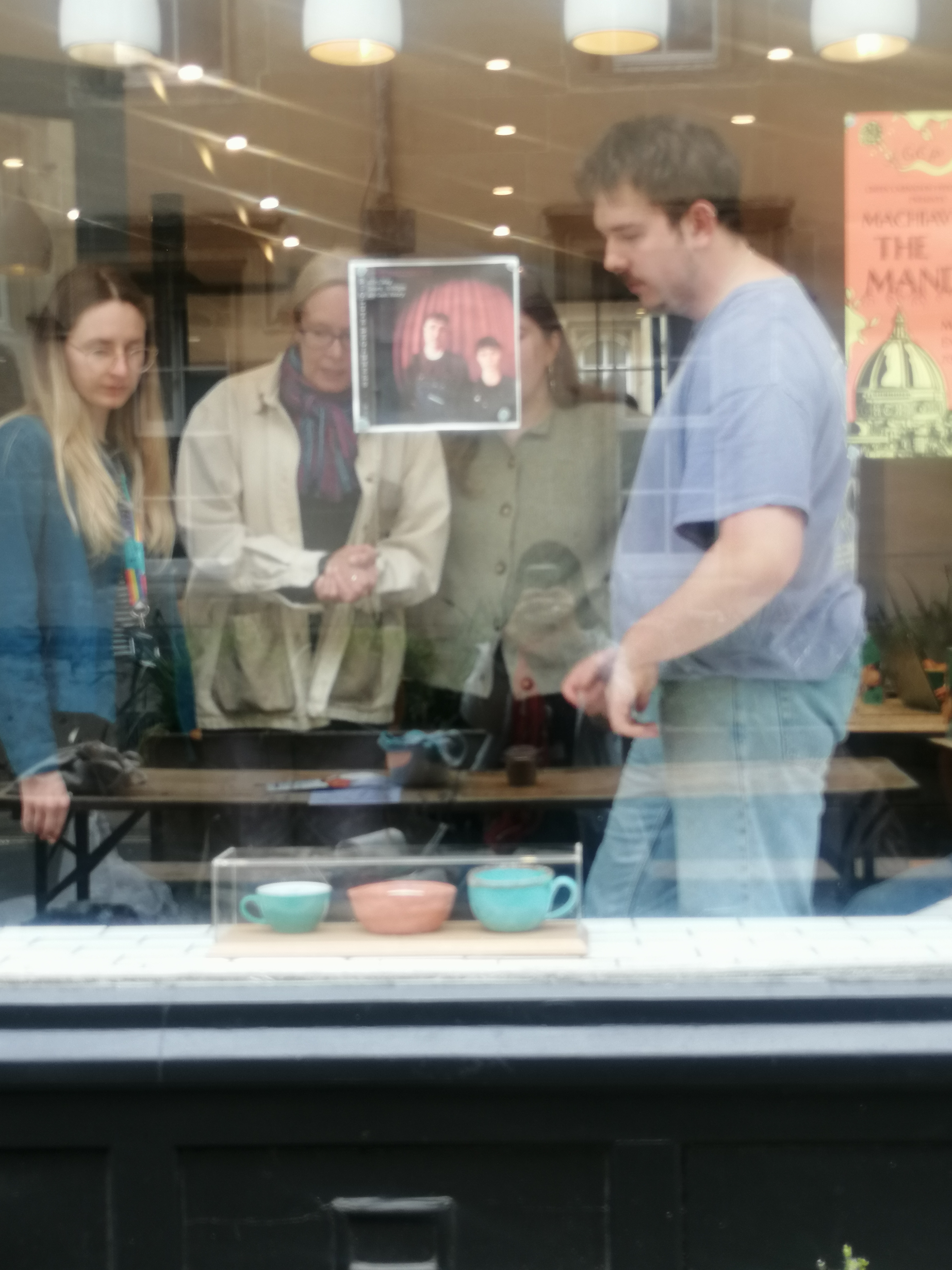Artistic research collaborations with local businesses

In a busy university city like Oxford, it can be very challenging for early career researchers to stand out from the academic crowd and capture the attention of established and new non-academic audiences. The mainstay of the School's local research engagement involves inviting audiences for seminars, public talks, exhibitions, open days etc., mostly all within our buildings. In early 2023 we decided to try something different. We wanted to test what would happen if we invited our researchers to take their ideas and questions outside and embed them directly into our local community. Would this change how they think about their research and what audiences would they encounter and in what ways?
Robyn Mason (Communications and Outreach Manager) invited Miranda Creswell (Artist in Residence) to help her create pieces of art which would be located in different places in the city with an aim to entice new visitors to encounter our researchers in unexpected contexts. Three local businesses generously agreed to work with them and trial this research engagement experiment: the White Rabbit pub, the Missing Bean Café and the Teardrop Bar in the Covered Market. This project was funded by the ASPECT Social Science Innovation Fellowship Programme.
The installations were particularly designed to complement the furnishings of the pub, cafe and wine bar. Each piece is unbranded and is accompanied by a single QR code next to an intriguing question such as 'Beer or Bunny?' They invite discovery by curious-minded customers who can't resist taking a closer look. The researchers were tasked with communicating their often complex research in 'bite-size', clear and fun ways and thinking about how their research could relate to these new environments.
The White Rabbit installation was based on research by Dr Joel Alves (ECR, Palaeobarn team – researching aDNA, animal domestication and for the purposes of this project: rabbits) and Dr Hannah Caroe (DPhil Archaeology in archaeobotany, particularly brewing practices in Anglo-Saxon England). The piece ‘Pub Archaeology’ linked to the following pages on the School website: https://www.arch.ox.ac.uk/pub-archaeology
The Missing Bean installation was based on research by two current DPhil students – Anna Barona and Catherine O’Brien who study the making of things, cognitive archaeology. For the purposes of this piece called ‘Cafe Culture’, they studied how you can go from a ceramic cup (the coffee cup) to clay as a cognitive medium and working with clay and mental health. It linked to the following pages on the School website: https://www.arch.ox.ac.uk/cafe-culture
The Teardrop installation was based on research by Dr Victoria Sainsbury. She's an archaeological scientist who specialises in glass manufacture, production, usage and destruction in the archaeological record. The piece ‘Market Archaeology’ linked to these pages on the School website: https://www.arch.ox.ac.uk/market-archaeology

A follow-up afternoon event ‘A Slice of Science’ was held at the White Rabbit pub on Wednesday 15 March 2023. Crossing divisional lines to include researchers from the Mathematical Institute, this event invited the pub audience to listen to five researchers give quickfire talks on their research based on the themes of shape, size, taste and colour. The presenters were Professor Greger Larson, Dr Joel Alves, Dr Hannah Caroe, Dr Ashleigh Haruda (all School of Archaeology) and Dr Hadrien Oliveri (Mathematical Institute). The talks were challenging to the speakers because they weren’t allowed to use slides and they had only 5 minutes to get their research question across to the audience, not all of whom were familiar with archaeology. This was a great experience of ‘elevator pitching’ their research ideas.
Feedback from the collaborators

Dr Hannah Caroe - "The White Rabbit art installation reminded me that my research can be, and often is, fun! I was delighted to have the chance to connect with people in the local community, via the pub, both through the installation and the 'Slice of science' talks... Each also reminded me that there is almost no point doing research unless it is communicated! "

Catherine O’Brien - "As DPhil students, so much of our work is independent. This was a fantastic opportunity to collaborate and work creatively with others to raise awareness of our research, encourage members of the public to think differently about pottery, and perhaps even give it a go for themselves!"

Anna Barona - "It’s been an absolute pleasure to be involved with this project. Cognitive archaeology is a less well-known area within and outside of Archaeology, so it's a great opportunity to create more awareness and reach a wider audience. Hopefully it will showcase a somewhat alternative perspective on what Archaeology can be — it’s not all bones and trowels!"

Ben Sankey (Head of Operations, Missing Bean): “Coffee drinking has been a very important part of human culture, spanning thousands of years. It’s special to see how it’s evolved over those years, with some beautiful cups and vessels resurfacing, bringing us together along for the ride. At the cafe, we’re always looking for exciting ways to offer something interesting for our customers. The chance to showcase this particular piece, offered a perfect fusion of archaeology, reflectiveness and art. Archaeology gives us the tools to examine and explain human behaviour, what better place than a coffee shop!”

Dr Joel Alves - "As a researcher, most of the discussions about my work happen in academic settings, surrounded by fellow scientists who understand the technical jargon. The experience at the Slice of Science event forced me to rethink the broader relevance of my research to the general public and how to convey complex ideas in an entertaining and engaging manner. Presenting a 5-minute talk in a relaxed pub setting, without any visual aids, felt more like a stand-up comedy show than a traditional science talk. The overall experience enriched my communication skills and despite the fact that my research-related jokes remain terrible, I definitely feel more comfortable using them in public."

Miranda and Ed Whinney (Manager of the White Rabbit) after installing the art piece

Cathy O'Brien, Anna Barona, Miranda Creswell and Ben Sankey (Head of Operations, Missing Bean) look on the installed art piece in the window of the Turl Street cafe

The Teardrop Bar art installation piece plays on themes of archaeological science, landscape and glass craftsmanship



